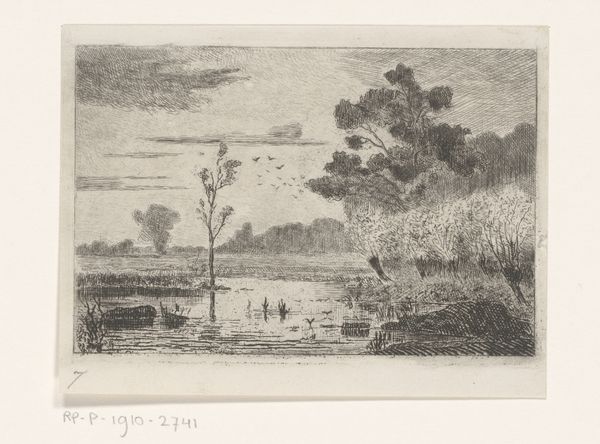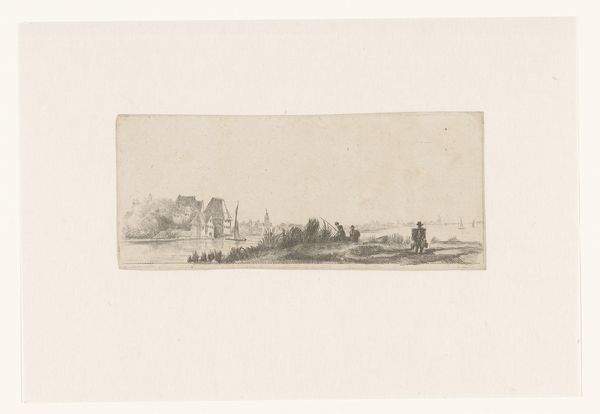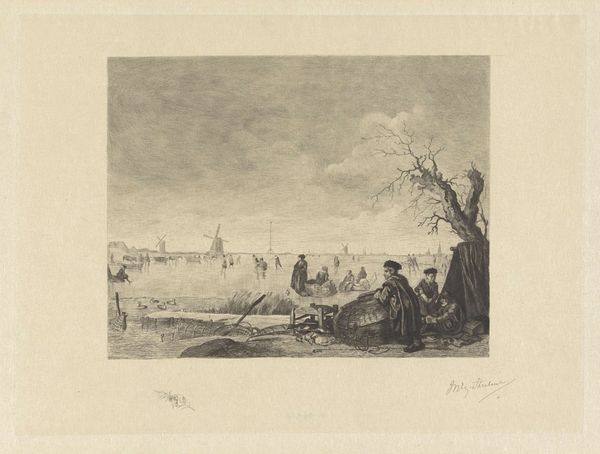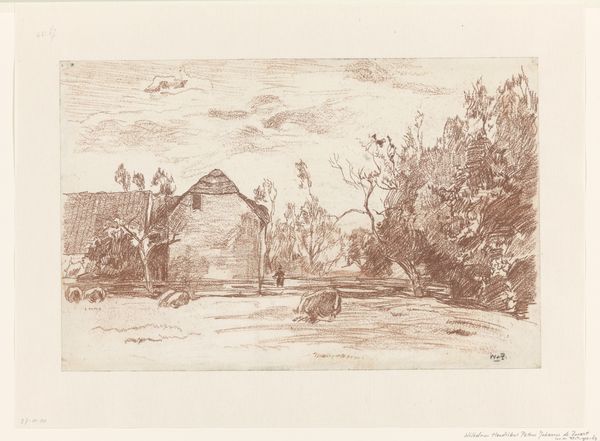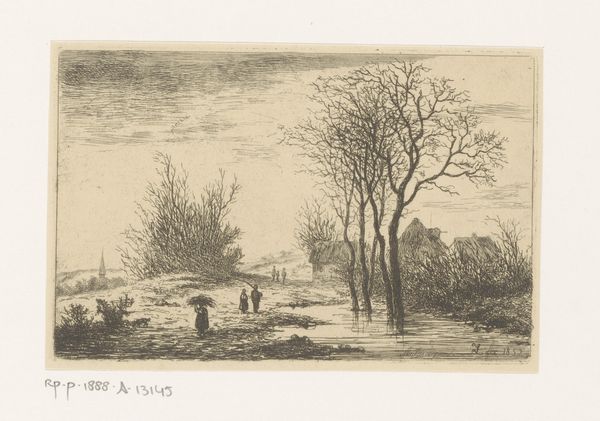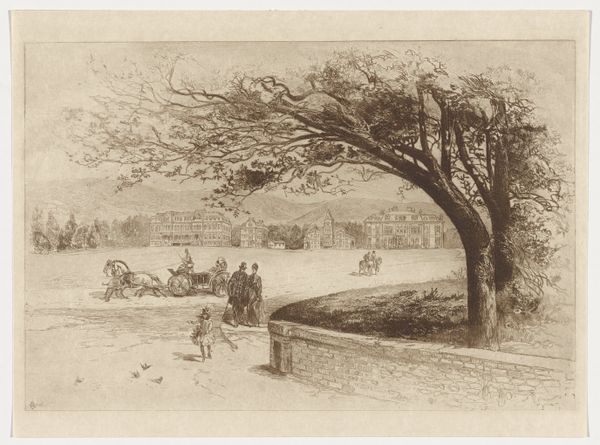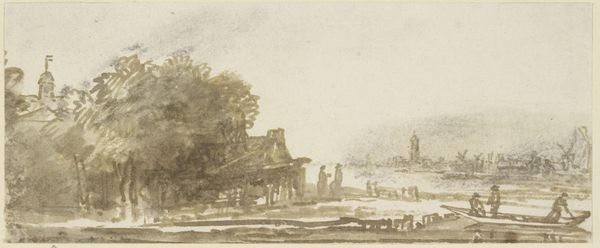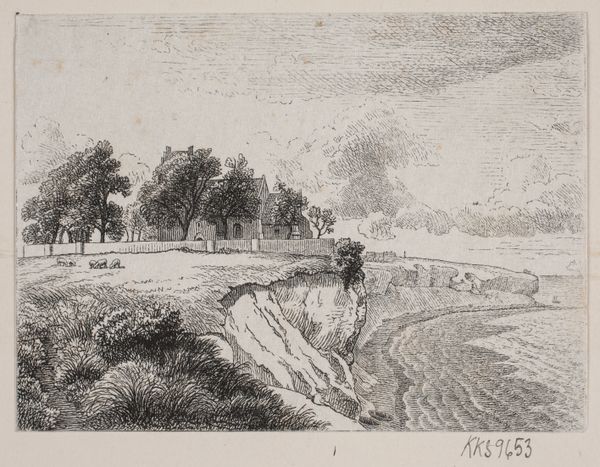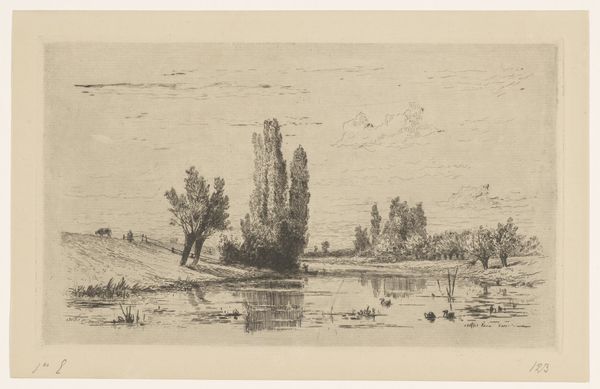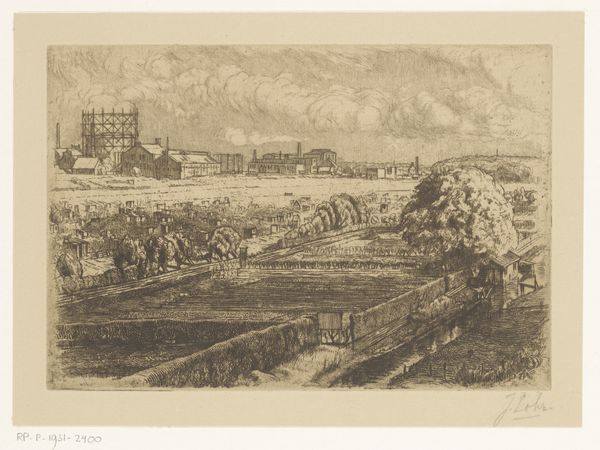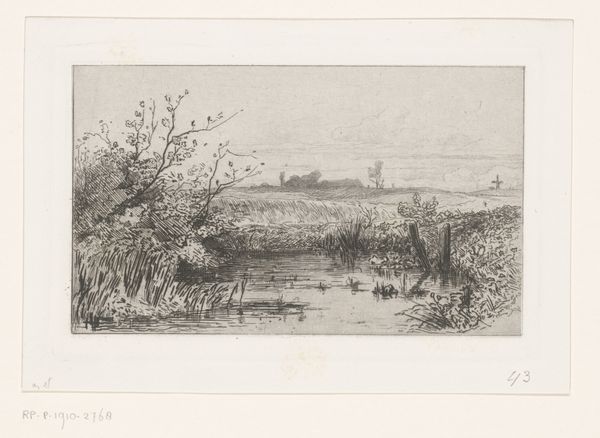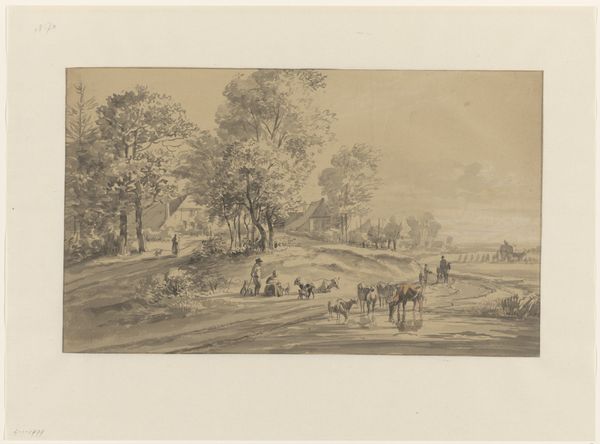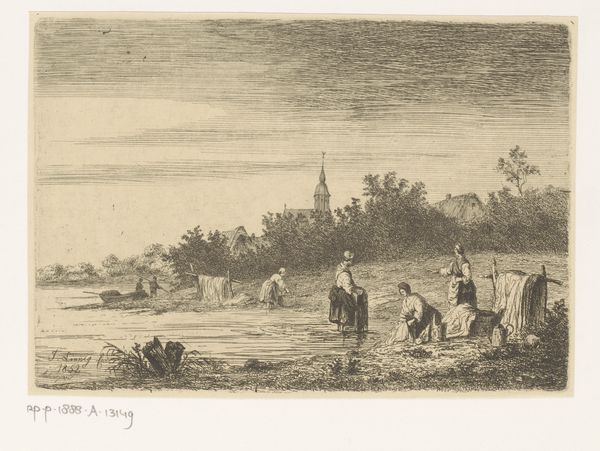
print, etching
#
dutch-golden-age
# print
#
etching
#
landscape
#
realism
Dimensions: height 87 mm, width 120 mm
Copyright: Rijks Museum: Open Domain
Editor: This etching, "Riviergezicht bij Nordhorn," by Carel Nicolaas Storm van 's-Gravesande, probably made sometime between 1851 and 1910, presents a seemingly quiet riverside scene. But there’s a lot going on - people working, a boat, a distant windmill. It feels… melancholy. What do you make of it? Curator: The 'melancholy' you sense speaks to the broader social and economic changes happening at this time. The rise of industrialization threatened traditional rural life, depicted here with such painstaking detail. Etchings like these often served a dual purpose: aesthetic appreciation and documentation of a disappearing world. Consider how the artist positions the figures – are they romanticized or simply workers? Editor: That's interesting. I hadn't considered it as a social document. It’s in the Rijksmuseum – how would that affect its interpretation then? Curator: Being housed in a national museum like the Rijksmuseum elevates it. It transforms a scene of everyday labor into a symbol of Dutch identity and history. Think about what the museum *chooses* to display, and how *that choice* impacts the stories we tell ourselves about our past. Does this resonate with you? Editor: Absolutely. Displaying it validates the scene, making the lives of these laborers part of the Dutch narrative. But is that romanticizing their experience, maybe? Curator: That’s a valid point. The "realism" tag here suggests an attempt to capture life as it was, but remember art is always mediated through the artist's and the institution's perspectives. The absence of overt criticism or idealization makes it seem relatively objective for its time, wouldn't you say? Editor: Yes, the lack of overt drama is striking. So it’s not just *what* is shown, but *how* it’s presented that shapes our understanding. I will think differently now. Curator: Exactly. By recognizing art as both a product of and a reflection upon socio-political forces, we see how its meanings continue to shift and evolve. It offers a nuanced, challenging reflection on our own cultural landscape, no?
Comments
No comments
Be the first to comment and join the conversation on the ultimate creative platform.
